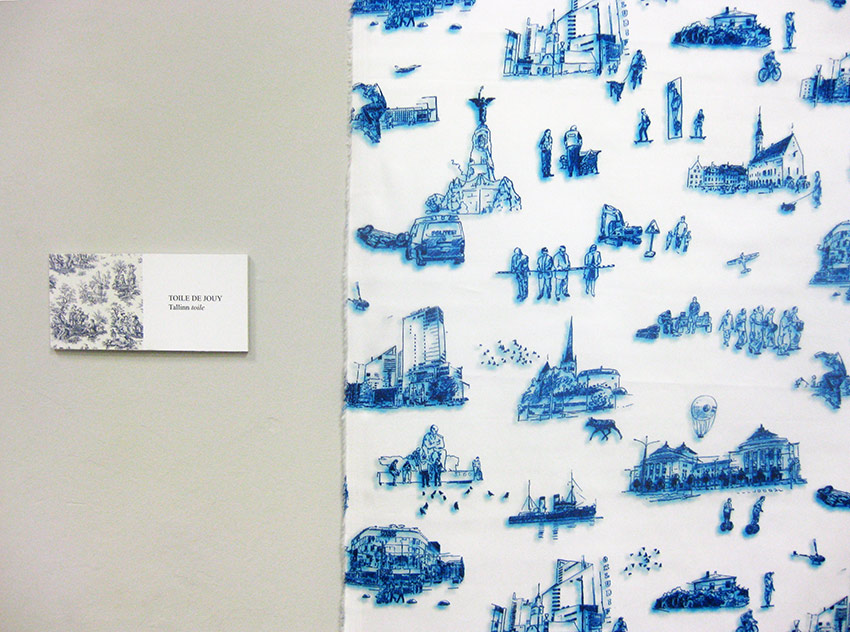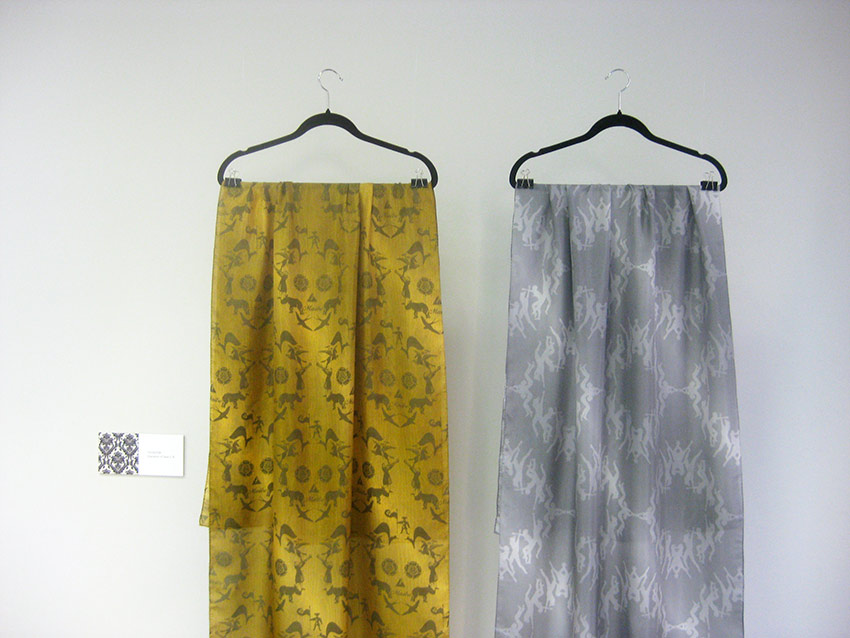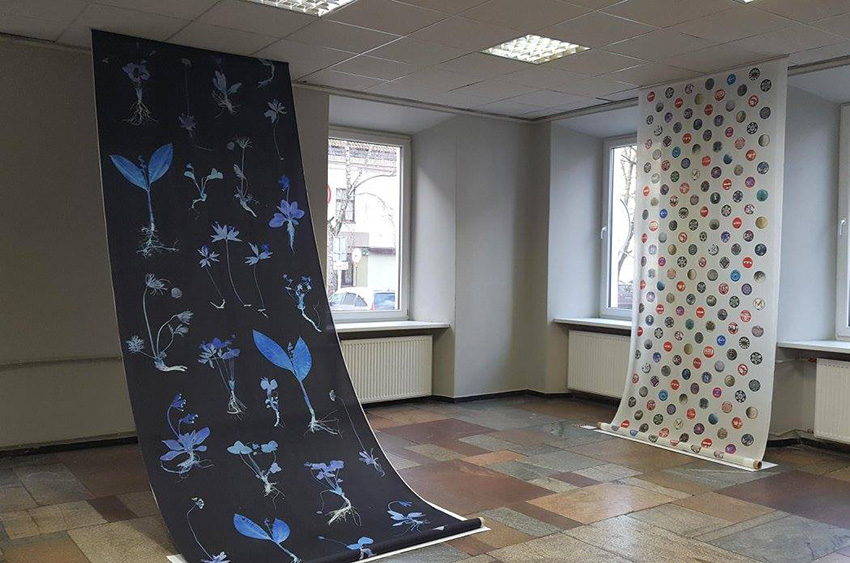
"No pattern should be without some sort of meaning." William Morris (1834-1896)
Krista Leesi takes pattern design as an art form. In this exhibition several historical or just well known typical textile patterns are interpreted. Patterns are not just decorative, they give the traditional frame to play with meanings, express new ideas, tell stories, hide messages… The approach is playful, sometimes perhaps with some irony.

Millefleur is a homage to the medieval “thousand flowers” tapestry, executed in herbarium plants from Estonian nature. The flowers transform from mere background characters into main characters. The natural beauty is revealed in triple magnification.
Tallinn toile is an experiment based on the game rules of the historical French fabric printing style toile de jouy. The topical pattern in blue-white flag colours of the capital of Estonia depicts different architectural motifs and scenes of city life. A keen observer may notice hints to current topics and social problems in city life.
Polka dots / Paris. Different moments, moods, historical and modern hints from Paris – together they all become dots on the fabric.
Damask / Question of taste I, II. Playing around with different Estonian symbols, signs, logos, mascots etc., you can't be sure whether or not the result will be a politically correct pattern.
Pepita / Flying Squirrel (Pteromys volans) is driven from concern about the Estonian forests. A new law from 2017 allows the cutting down of younger forests, so among other problems there will not be enough suitable living environments for the flying squirrel, which especially needs an old forest to survive.
Herringbone / Herring (Clupea harengus). Sometimes a herring is just a herring.






